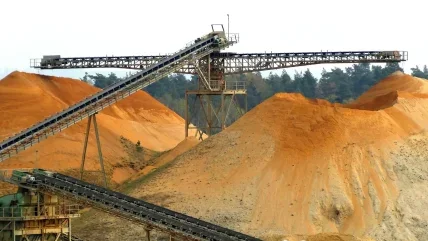
First Mining Gold has submitted its final environmental impact statement and environmental assessment (EIS/EA) for the Springpole gold project in Canada.
The submission follows two and a half years of consultations since the draft EIS/EA was filed in May 2022.
It incorporates more than 14 years of research, data collection, and project refinements completed since the pre-feasibility study (PFS), aimed at enhancing the environmental and operational performance of the Canadian gold project.
First Mining Gold’s final EIS/EA provides an extensive review of the Springpole project’s environmental and socio-economic impact, assessing over 20 factors. These include environmental mitigation strategies, socio-economic benefits, and detailed project design adjustments.
The project is being reviewed by the Impact Assessment Agency of Canada (IAAC) under the Canadian Environmental Assessment Act (2012) and by Ontario’s Ministry of Environment, Conservation and Parks (MECP) under the province’s Environmental Assessment Act.
First Mining Gold CEO Dan Wilton said: “The team has worked across multiple scientific and engineering disciplines to achieve a sustainable Project that will both protect the environment and deliver tremendous socio-economic and infrastructure benefits to an underserviced region of Northwestern Ontario.
“Through advancements in Project designs, analysis shows that all regulatory requirements will be met by the Project, including fish habitat offsetting and water quality that will meet stringent Canadian Water Quality Guidelines during all phases of the project.”
Located in northwestern Ontario on an area of around 800ha, the Springpole gold project is said to be one of the largest, undeveloped, open-pit gold deposits in the country.
According to the PFS released in 2021, the Springpole gold project will entail an initial capital expenditure (capex) of $718m.
The project is estimated to have a life of mine (LOM) of 11.3 years, with primary mining and processing activities focused in the first nine years, followed by processing of lower-grade stockpiles for the remaining duration.
Besides, the PFS projected an after-tax net present value (NPV) of $995m and 29.4% post-tax internal rate of return (IRR) with an after-tax payback of 2.4 years.
The next phase in the assessment involves a conformity review by the IAAC to verify adherence to the EIS guidelines, followed by a public comment period anticipated to conclude in Q1 2025.
The full EIS/EA review process is expected to be completed by the fourth quarter of 2025.






